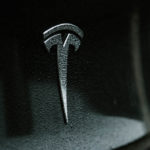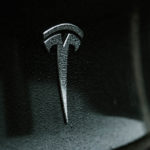Economics
Is Tesla just another car company?
In the ever-evolving landscape of the automotive industry, few companies have captured the world’s attention quite like Tesla. Thirteen years ago, electric…


In the ever-evolving landscape of the automotive industry, few companies have captured the world’s attention quite like Tesla. Thirteen years ago, electric cars were synonymous with virtue signalling rather than high-performance excitement. However, Tesla disrupted this perception, transforming electric vehicles into something thrilling and aspirational. Its journey, from a modest initial public offering (IPO) in 2010 to a valuation exceeding $1 trillion in 2019, has been nothing short of remarkable. Yet, recent stagnation in Tesla’s stock price has prompted a critical question: Is Tesla still the visionary pioneer it once was, or is it merely becoming “just another car company”?
A background to Tesla
Thirteen years ago, in 2012, hybrid electric cars were unsexy and uninspiring. Think of the Toyota Prius here in Australia, or the Chevrolet Volt and Nissan Leaf in the U.S. These were virtue-signaling vehicles designed without mass appeal in mind. Manufacturers also had a vested interest in their legacy internal combustion engine (ICE) models and weren’t tooled up for mass adoption of electric vehicles (EV).
Tesla changed all that, first delivering exciting luxury cars that also happened to be fast and battery-powered, before widening the appeal by launching more affordable models that were also powerful and equally good-looking.
Around thirteen years ago, a small company called Tesla Motors (NASDAQ:TSLA) launched its initial public offering (IPO) on the NASDAQ stock exchange, raising a total of U.S.$226.1 million at a (split adjusted) share price of U.S.$3.40. Three years later, in 2013/14, Tesla transitioned from being essentially a start-up with highly uncertain survival prospects to being a credible auto business, redefining public expectations around electric vehicles with its introduction of the Model S, and in 2013, generating its first quarterly profit.
Excitement in the stock market for Tesla, however, was arguably greater. Between 1 January 2013 and 1 January 2014, consensus full-year earnings forecasts for Tesla were revised up sharply, with 2015 net income forecasts moving from U.S.$247 million to U.S.$432 million and 2016 net income forecasts moving from U.S.$415 million to U.S.$784 million.
The less-than-doubling of earnings expectations however, resulted in a 10-fold increase in the share price as the discount associated with doubts about the company’s survival unwound.
Tesla’s profits fell well short of those forecasts, with the company reporting a net loss in 2015 of U.S.$889 million and another net loss in 2016 of U.S.$773 million. Yet the market’s excitement didn’t wane. The share price gains didn’t continue, but the price gains didn’t reverse either. Profitable hopes were simply deferred.
At the start of 2015, Tesla commanded a market valuation of close to U.S.$30 billion, well short of the value ascribed to the world’s largest automakers, but still around half that of Ford and General Motors.
It wasn’t until 2019 that the fortunes of Tesla started to take off, with its shares jumping from U.S.$12.65 in May 2019 to a split-adjusted U.S.$409.97 on November 04, 2021, and a market capitalisation of over U.S.$1 trillion.
In mid-2020, Tesla achieved four consecutive quarters of positive net income for the first time in its history, and over the prior 12 months consensus net income forecasts for Tesla increased substantially. The 2021 forecast increased to U.S.$3.15 billion from U.S.$1.72 billion, and the 2022 number rose to $5.03 billion from $3.44 billion. This less-than-doubling of earnings forecasts had driven another 10x share price move.
Tesla today
Today, however, the share price is roughly where it was almost three years ago. If the gas has been let out (pun intended) of the share price’s ascent, it begs a question: what if Tesla is just another car company?
Tesla is still the market leader in battery-powered electric car sales in the U.S., with a market share of above 60 per cent, and the company’s flagship Model 3 is the best-selling EV model in the U.S..
Meanwhile, Tesla’s market capitalisation today of U.S.$777 billion is more than the combined market capitalisation of the next eight biggest manufacturers, including (in descending order) Toyota, Porsche, BYD, Mercedes Benz, VinFast Auto, BMW, Volkswagen, and Ferrari.
Not unlike Apple, Tesla has adopted a closed-ecosystem approach to its products, owning the cars, the servicing, and the charging directly, setting it apart from other manufacturers. But does this deserve the hefty multiple placed on the company’s earnings that renders it as valuable as the world’s next eight biggest manufacturers?
Investors can buy Toyota for $22,000 per vehicle sold in 2022, BMW for $27,825, BYD for $53,800 per vehicle sold, or they can buy Tesla for nearly U.S.$591,000 per vehicle sold.
The economics between Tesla and every other car manufacturer in the world, in the long run, might be slightly different. Still, they cannot be sufficiently dissimilar to justify such a disparity in either absolute market capitalisation terms or in relative terms.
Despite a share price today that is 40 per cent below its all-time high, enthusiasm for the world-changing potential of EV technology has clearly translated to an equally transformative approach to stock market valuation for Tesla.
What investors are forgetting, however is that Tesla will ultimately be a car company.
As competitors catch up, the competitive advantage of Tesla will erode. Meanwhile, any differences in the economics of car manufacturing between Tesla and its rivals will also diminish as more of each brand’s fleet moves to electric. In time it will be harder to justify such a disparity between Telsa’s market valuation and that of its competitors.
Ten reasons why the differences will narrow
Increased competition: As we have written about many times, an increasing number of automobile manufacturers, including traditional giants and EV startups, are producing electric vehicles that compete directly with Tesla’s lineup. Brands like Ford, Rivian, Lucid, and Chevrolet have rolled out new electric models that, in some cases, outperform Tesla in terms of range, performance, and looks (the latter being subjective of course). And while the market for EVs overall is growing, Tesla’s dominance in EV market share in the U.S. has already slipped from 72 per cent to 62 per cent in just the first year of rising competition and brand choice.
Meanwhile analysts believe Telsa’s market share could fall to as little as 18 per cent by 2026 from 78 per cent in 2018.
Ageing product line: Tesla first new passenger vehicle model in three years is the just released updated Model 3. This ‘stagnation’ in model releases provides competitors with an opportunity to entice potential Tesla customers with newer and potentially more advanced options resulting in Tesla losing further share.
Struggles in key markets: China, the world’s largest auto market, has been a significant growth engine for Tesla. However, the company has experienced a softening in demand in China. Local competitors, of which BYD Co. is the largest by no means alone, are making significant strides, offering a more diversified range of models that cater to various price points. Critics in China suggest Tesla does not fully understand the preferences of Chinese consumers.
Marketing and branding issues: Tesla’s decision to offer discounts to boost sales is a departure from its earlier stance, indicating potential demand challenges and lower margins. Furthermore, Elon Musk’s controversial takeover of Twitter Inc. has affected Tesla’s brand perception, pushing some potential buyers away.
Distracted Elon Musk: Many shareholders are concerned that Elon Musk, the driving force behind Tesla, has been distracted with his acquisition and management of Twitter, now called X. Such diversions annoy analysts who believe they could impact Tesla’s strategic directions and operational efficiency.
Share price malaise: Tesla’s share price is unchanged from almost three years ago, suggesting investors are acknowledging the challenges Tesla faces and waking up to the reality of the long-term economics of manufacturing cars.
Inability to meet growth targets: Despite aggressive scaling efforts, Tesla is falling short of its annual growth targets. With a 40 per cent annual growth rate in 2022 compared to 87 per cent in 2021, the company’s exponential growth might be plateauing if Elon Musk’s target of two million vehicles in 2023 is not met.
Shifting strategies: Elon Musk’s statement back in July 2021 that the “goal is not to be a car company” suggests a broader and potentially more diffuse focus and remains a reminder for analysts who focus too closely on the company’s position and growth in the automobile industry.
Over-reliance on existing models: Rather than diversifying its lineup, Tesla is focused on scaling up and churning out as many of its existing models as possible. This strategy is at odds with conventional (and capex intensive) wisdom that releases new models almost annually. The traditional auto industry belief is car makers need to offer a wide range of updated and more advanced models to keep buyers interested and part of their brand ‘family’.
Valuation metrics: At September 2023 Tesla is trading at 63.1 times trailing twelve-month (TTM) earnings. This compares to 120 times at the end of 2021. At either measure the price-earnings (PE) is a market valuation more typical of high-growth tech companies than a car manufacturer.
Conclusion
If Tesla does indeed become ‘just a car company’, the sharp drop in PE will continue and reflect a growing realisation in Tesla’s growth prospects, its position in the auto industry, and its economics are less exciting than once believed.
Tesla remains a global leader in the EV market with strong fundamentals, however, there are clear signs that it faces increasing challenges from competitors, potential demand issues, and market sentiment shifts. The lofty valuations and hype surrounding the company needs to be re-evaluated considering these inescapable realities.

Argentina Is One of the Most Regulated Countries in the World
In the coming days and weeks, we can expect further, far‐reaching reform proposals that will go through the Argentine congress.
Crypto, Crude, & Crap Stocks Rally As Yield Curve Steepens, Rate-Cut Hopes Soar
Crypto, Crude, & Crap Stocks Rally As Yield Curve Steepens, Rate-Cut Hopes Soar
A weird week of macro data – strong jobless claims but…
Fed Pivot: A Blend of Confidence and Folly
Fed Pivot: Charting a New Course in Economic Strategy Dec 22, 2023 Introduction In the dynamic world of economics, the Federal Reserve, the central bank…















